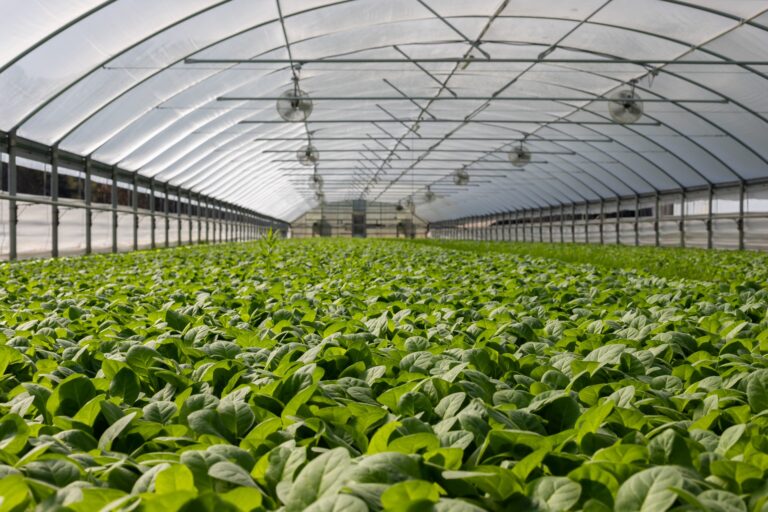Your All Year Round Garden Environment: The Humble High Tunnel
With globalization of market, shrinking land and climate change, the protected cultivation of high value crops has emerged as the single most important technology for ensuring high productivity, improved quality and profitable returns. Protected cultivation is a process by which the crops are grown in a controlled environment. As per requirement of the crop the temperature, humidity, light and other factors can be regulated. Thus a healthier and a larger produce can be obtained depending upon the need. Different types of protected cultivation practices exist. Some commonly used protected cultivation practices are forced ventilated greenhouse, naturally ventilated polyhouse, insect proof net house, shade net house etc.
The Controlled Environment
In greenhouses the plants are grown in a controlled environment. The factors such as temperature, light intensity and shade, irrigation, fertilizer application, and atmospheric humidity will be controlled . Greenhouses may be used to overcome limitations in the growing qualities of a piece of land, such as short season or poor light levels, and they can thereby improve food production in marginal environments. Shade houses are used specially to provide shade in hot and dry climates. Greenhouses are increasingly important in the food supply of high-latitude countries as they may enable certain crops to be grown throughout the year.
Greenhouses are often used for growing horticultural crop like flowers, vegetables, fruits, and transplants. These crops generally requires intensive care. The commercial production of greenhouse varieties of certain crops, like tomatoes, are successfully grown throughout the year. The seedlings of many vegetables and flowers can be grown in greenhouses in late winter and early spring, and then transplanted outside as the weather warms. Bees are the pollinators used in greenhouse conditions. Bumblebees are most commonly used ones among the bees for and artificial pollination will also be practised. Hydroponics can also be practised used to make the most use of the interior space.
The closed environment of a greenhouse has its own special management requirements, compared with outdoor production. Pests and diseases, and extremes of temperature and humidity, need to be controlled, and irrigation is important to supply water. Most greenhouses use sprinklers or drip lines. Significant inputs of warmth and lightweight could also be required, particularly with winter production of warm-weather vegetables
The growing environment inside a hoop houses varies in many important ways from field production, and those differences will influence the way crops are managed. A greenhouse may be similar or larger in size compared to hoop houses. They are usually covered with one or two layers of greenhouse plastic, rigid polycarbonate or glass. As the heating , cooling and irrigation in a greenhouse is fully automated the usage of electricity will be more .
Hoop houses
The commonly used type of protected cultivation for local food production in many parts of united states are High tunnels, or hoop houses. These are unheated greenhouses which help commercial farmers to improve the profitability and productivity of their farms by extending their growing season. These structures provide protection from abiotic stress like wind, storm, heat etc and biotic stress like pest and diseases and thus they aid fruit and vegetable crop production by extending the cropping season and result in a more-stable production system that poses less risk of crop failure. These structures depends mainly on passive solar heating and passive ventilation.

High tunnels and season extension allow farmers to increase the availability of their crops beyond the traditional outdoor growing season. Premium prices and an extended income stream are a number of the benefits farmers pursue with season extension techniques. Hoop house of crops production has increased rapidly in recent years.
Framework
Hoop houses normally have steel pipe frames set into the ground and are covered with one or two layers of greenhouse-grade plastic. The irrigation is generally done by using drip irrigation systems, hand watering or small sprinklers. The sidewalls can be rolled up, usually by hand cranking but sometimes automated, these provides ventilation in hoop house construction. They can also have end-wall vents or ridge vents. Crops can be grown in the ground, in raised beds or in the containers. The ground can be bare, or it can be mulched with landscape fabric, plastic mulch or an organic mulch such as straw.
The shape of hoop houses depends on their size. The smaller hoop houses will be Quonset shaped (half-circle frame) while larger tunnels are Gothic shaped (peaked frame). Gothic frames has an added advantage of shedding snow well. The internal bracing of these designs will provide stability during wind or snow. Ground posts must be anchored securely to guarantee structural stability.
Automation can be done in greenhouse vents. The automatic vents of the greenhouse have piston which will help in opening and shuting automatically. When the temperature increases the vents will open and it will close automatically when the temperature drops down. The pistons of these vents have a specially designed wax which will expand when heated which will make the opening and closing of the vents automatic.
High tunnels come in different shapes, sizes, and structures. Hoop House USA provides information regarding the construction , use and management of hoop house or high tunnel green house. The raw materials required for the construction of hoop house can be brought right here very competitive prices, and we pride ourselves in our customer service excellence.
